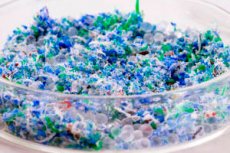New publications
Antibiotic activity altered by interaction with nanoplastics
Last reviewed: 02.07.2025

All iLive content is medically reviewed or fact checked to ensure as much factual accuracy as possible.
We have strict sourcing guidelines and only link to reputable media sites, academic research institutions and, whenever possible, medically peer reviewed studies. Note that the numbers in parentheses ([1], [2], etc.) are clickable links to these studies.
If you feel that any of our content is inaccurate, out-of-date, or otherwise questionable, please select it and press Ctrl + Enter.

A recent study published in the journal Scientific Reports has found that the adsorption of antibiotics onto microplastics and nanoplastics (MNPs) leads to serious health consequences.
The breakdown of plastics results in particles of various shapes, sizes and compositions. These microscopic particles, known as microplastics and nanoplastics (MNPs), are present in the environment and can penetrate the human body, including cells.
MNPs can adsorb various substances, including drug residues, which leads to physiological changes in the body. The situation with antibiotics is especially alarming, since the effect on bacteria can contribute to the development of resistance. In addition, MNPs provide a surface for microbial colonization, acting as vectors for their transmission.
Researchers studied the interaction of the antibiotic tetracycline (TC) with nanoplastics and their effect on the biological activity of the antibiotic.
Four types of plastic were selected for the experiment:
- Polystyrene (PS)
- Polyethylene (PE)
- Nylon 6.6 (N66)
- Polypropylene (PP)
Two approaches were used to create the TC-NP complexes:
- Sequential annealing (SA) method: The plastic was formed in the presence of TC, which allowed for maximum adaptation of the polymer chains to the antibiotic molecule.
- Free Particle (FP) Method: The plastic was pre-formed and the TC was placed on its surface in different orientations.
Simulations were then carried out to assess the stability of the complexes as well as their effect on antibiotic activity in cell cultures.
Key Results
Formation of complexes:
- The SA method demonstrated greater stability of the complexes than FP. Tetracycline was more often found inside the nanoplastics.
- The polar interactions between TC and N66 were stronger than its solubility in water, resulting in strong bonds.
Molecular Dynamics:
- The polymer chains of PS and N66 moved less due to steric and hydrogen bonds. PP showed high mobility, allowing TC to penetrate into the structure.
- In some cases, such as PS, the TC molecule reattached to the surface after initially detaching.
Experiments on cell cultures:
- The presence of nanoplastics (PS, PE, PET) significantly reduced the activity of TC, which was confirmed by a decrease in the level of expression of fluorescent protein in cells.
Potential risks:
Nanoplastics alter the absorption of antibiotics, transporting them to new sites and increasing local concentrations, which may contribute to the development of bacterial resistance.
Conclusions
The results of the study confirm that the interaction of nanoplastics with antibiotics has a significant impact on their biological activity:
- Absorption issues: Nanoplastics may alter the pharmacokinetics of drugs.
- Stimulation of resistance: Localized increases in the concentration of an antibiotic in the bacterial environment can promote the development of resistance.
This study highlights the need for further research into the impact of MNPs on human health and the development of measures to reduce their impact.
